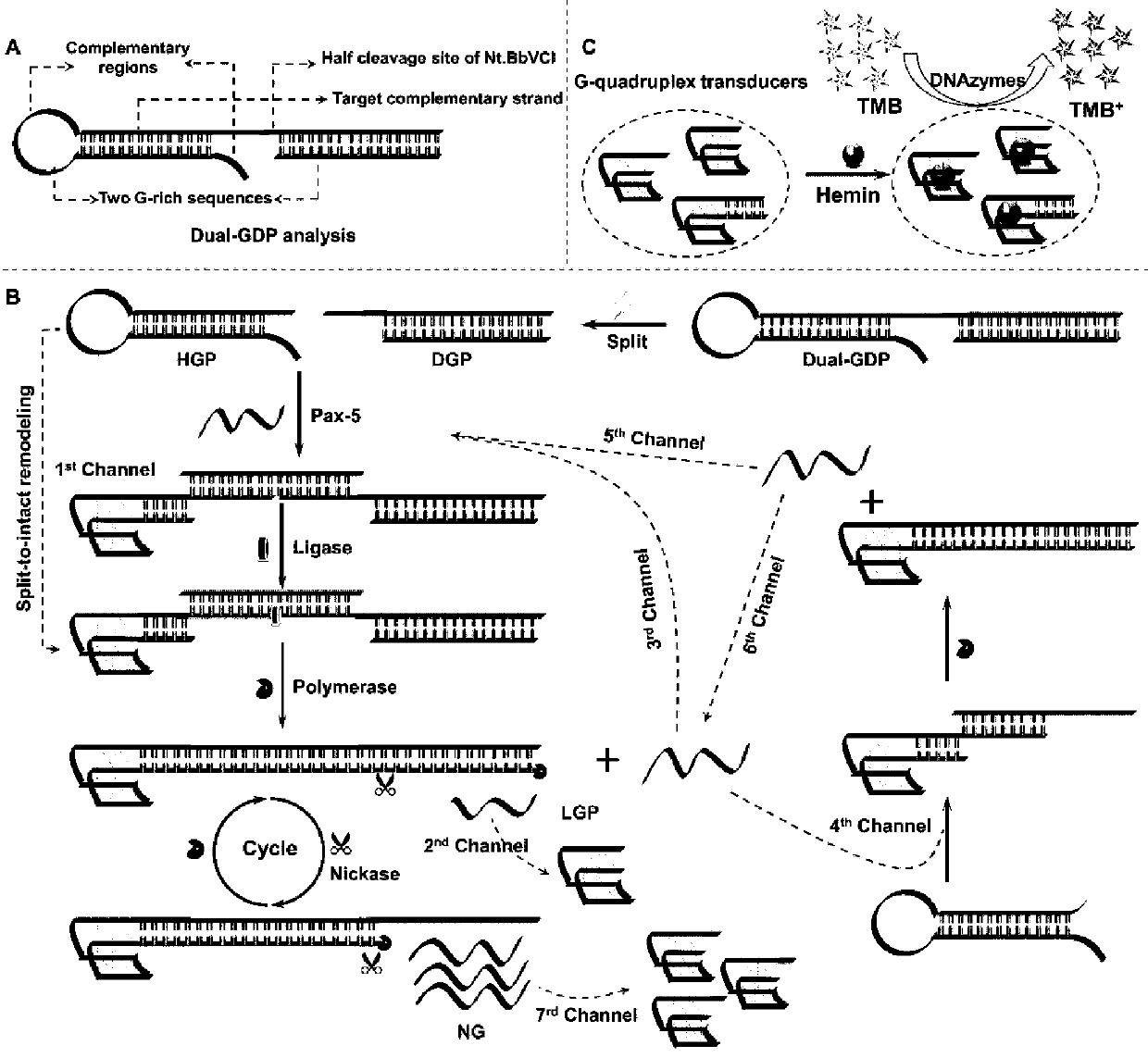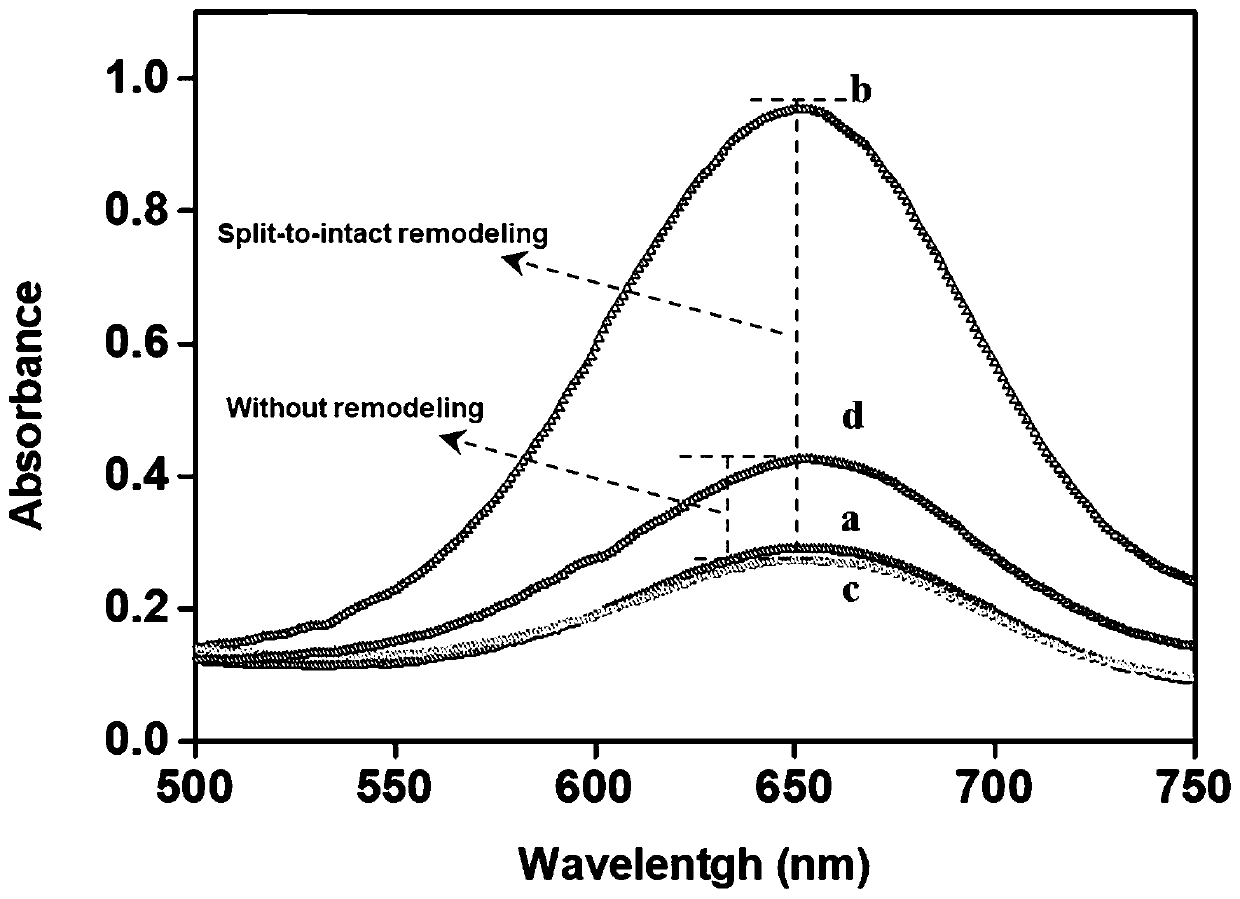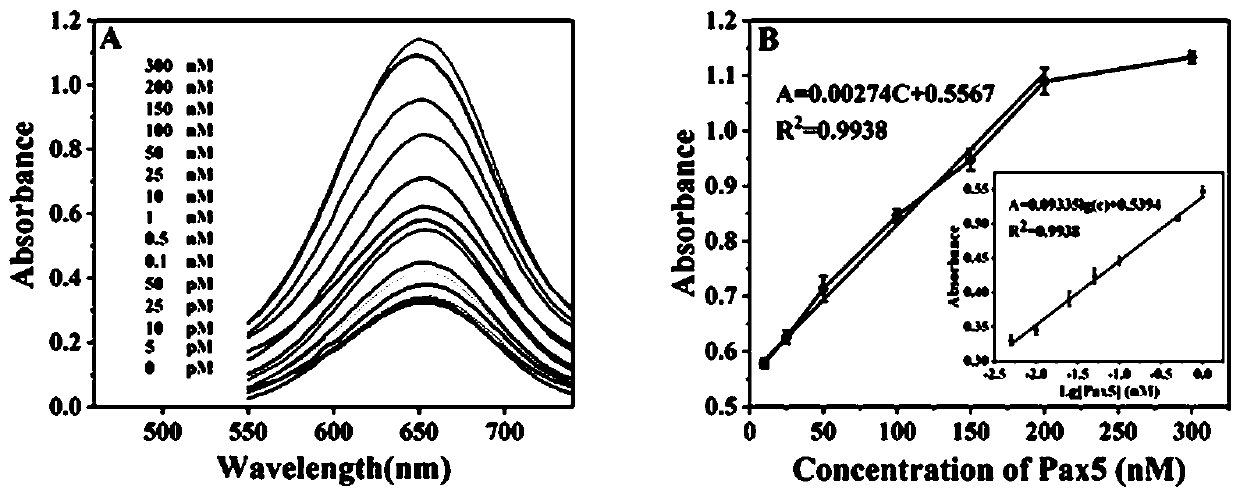Enzyme-assisted hairpin probe remodeled label-free colorimetric sensor based on target trigger and application of sensor
A colorimetric sensor and hairpin probe technology, applied in the field of nucleic acid visualization detection, to achieve the effect of reducing complexity, improving reaction speed and realizing recycling
- Summary
- Abstract
- Description
- Claims
- Application Information
AI Technical Summary
Problems solved by technology
Method used
Image
Examples
Embodiment 1
[0033] 1. Preparation of a label-free colorimetric sensor based on target-triggered enzyme-assisted hairpin probe remodeling. The preparation principle is shown in figure 1 , the preparation steps are as follows:
[0034] (1) DNA pretreatment: All DNA (hairpin probes HGP, LCP, and LGP) must be pretreated before use. The sequence of the hairpin probe HGP is shown in SEQ ID No.1, and its 5' end is modified by a Phosphate group; the sequence of LCP is shown in SEQ ID No.2, and the sequence of LGP is shown in SEQ ID No.3; the processing method is: put the microcentrifuge tube containing the DNA sequence in a centrifuge at 5000rpm, centrifuge for 3 min, and use Tris-EDTA buffer with a pH of 8.0 was diluted to 10 μM; DNA with a hairpin structure was heated at 95°C for 5 min, and then slowly cooled to room temperature to allow the probe to form a hairpin structure.
[0035] (2) Mix the same volume of 10 μM LGP and 10 μM LCP in a reaction tube, incubate for 2 h, and store at 4 °C for...
Embodiment 2
[0042] Specific detection by label-free colorimetric sensors
[0043] Considering the requirements of practicability, in order to evaluate the specificity of the method of the present invention, the standard solution of different concentrations of Pax-5 is replaced by a DNA solution containing different mismatched bases with a final concentration of 250 nM. Repeat the steps of Example 1, with reference to Example 1 Experimental steps The single-base mismatch sequence MT1 sequence is shown in SEQ ID No.4, the three-base mismatch sequence MT2 sequence is shown in SEQ ID No.5, and the five-base mismatch sequence MT3 sequence is shown in SEQ ID The NT sequence shown in No.6, the complete mismatch sequence is shown in SEQ ID No.7, and the detection is carried out, and the detection result is as follows Figure 4 As shown, to examine the specificity and selectivity of the method for specific targets, the single-base mismatch sequence (MT1), three-base mismatch sequence (MT2), five-b...
PUM
| Property | Measurement | Unit |
|---|---|---|
| volume | aaaaa | aaaaa |
| volume | aaaaa | aaaaa |
| wavelength | aaaaa | aaaaa |
Abstract
Description
Claims
Application Information
 Login to View More
Login to View More - R&D
- Intellectual Property
- Life Sciences
- Materials
- Tech Scout
- Unparalleled Data Quality
- Higher Quality Content
- 60% Fewer Hallucinations
Browse by: Latest US Patents, China's latest patents, Technical Efficacy Thesaurus, Application Domain, Technology Topic, Popular Technical Reports.
© 2025 PatSnap. All rights reserved.Legal|Privacy policy|Modern Slavery Act Transparency Statement|Sitemap|About US| Contact US: help@patsnap.com



